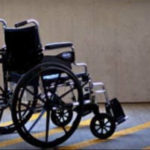Spinal Cord Injury
 We specialize in Spinal Cord Injury Chicago & Amputation Attorney Chicago IL; usually, from trauma arising out of an auto accident.
We specialize in Spinal Cord Injury Chicago & Amputation Attorney Chicago IL; usually, from trauma arising out of an auto accident.
We have seen it all. Cullotta Law Offices has been primarily litigating brain and spinal injury lawsuits since 2006. Most of Chicago's Personal Injury lawyers cannot say the same.
3 Common Ways a Spinal Cord Injury (SCI) Typically Occurs By:
- Poisoning
- Electrical Shock
- Underwater mishaps
- Trauma / Traumatic SCI
4 Common Types of Trauma resulting in a Spinal Cord Injury may include:
- Car Accident
- Work-related injury (Construction site)
- Fall (Height Falls)
- Sports Injury
Damage to The Spinal Cord:
A spinal cord injury is caused by nerve damage to the bone that protects the spinal canal rather than by an actual back or neck injury. Loss of function results from the trauma to the spinal cord but usually leaves the cord intact and bruised.
2-Consequences From A Traumatic Spinal Cord injury
- Loss of function results from trauma to the spinal cord but usually leaves the cord intact and bruised.
- Paralysis usually accompanies a spinal cord injury
Spinal Cord Injury Can Be Complete or Incomplete
Spinal cord injuries may result in complete (total/quadriplegia) or incomplete (partial / Paraplegia) loss of function (movement and or sensation below the injury site).
A complete loss of function means all nerves are compressed and there is loss of all movement or sensation below the site of injury. On the other hand, a partial loss of function means the nerves are partially compressed; some function remains unharmed. Spinal cord injuries may also be on both sides of the body or one side). One side of the body or on both sides.
What Is an Incomplete Injury?
- Damage to the front of the spinal cord affects pain sensation, temperature, and touch sensation;
- Trauma damage to nerve fibers that carry information to the spinal cord [from the brain] results in impairment in arms and hands and sensory loss below the site of the spinal injury.
- Injury to the lateral half of the spinal cord.
- Spinal bruises are the MOST COMMON type of spinal cord injury. Inflammation and bleeding occurs near the spinal cord bruise
What Is a Complete Spinal Cord Injury?
A complete SCI (quadriplegia) means there is no sensation and movement below the site of the trauma. This complete SCI may be caused by BRUISING, loss of blood to OR pressure on the spinal cord.
Injury to the Vertebral Column
The higher in the spinal column an injury occurs, the more function a person will lose. The most common region to sustain a spinal cord injury in your neck.
Loss of Function from a Spinal Cord Injury, based on region:
- Neck or Cervical region - Spinal Cord Injuries to the neck result in tetraplegia, also called quadriplegia.
- There are 8-segments (vertebra)of your neck that have an assigned number of C1 through C8. These neck segments (C1, C2, C3, C4, C5, C6, C7, and C8) control signals to the neck, arms, hands, and, in some cases, the diaphragm.
- C1 to C2 means a ventilator is necessary to breathe.
- C1, C2, and C3 injuries mean complete loss of function.
- C5 means eaves shoulder and biceps undamaged but with little control of wrist and hand.
- Individuals with a C5 SCI can live independently; carry out many everyday life activities including feeding themselves.
- C6 injuries generally allow wrist control to drive using an adaptive vehicle and handle personal hygiene, but poor fine hand function.-
- Thoracic (T1 to T12) relay signals to the torso and some parts of the arms.
- Lumbar Loss of function at the mid-back or lumbar (L1 to L5) segments is located right below the ribs and control signals to the hips and legs.
- The Sacral segments (S1 to S5) lie just below the midback and control signals to the groin, toes, and some parts of the legs.
In Addition to loss of function, a Spinal Cord Injury can lead to other changes. These may include:
- Inability to control bowel, bladder & Sexual Function
- Low blood pressure
- Autonomic dysreflexia (for injuries above T6)
- Deep vein thrombosis (DVT)
- spasticity, and
- Chronic pain
Cullotta Law Offices' Personal Injury Lawyer specializing in Spinal Cord Injury & Paralysis that, in IL, is usually caused by an auto accident or fall. Contact us at 847-651-7191.
